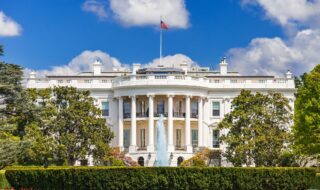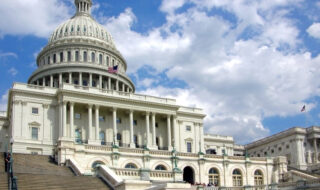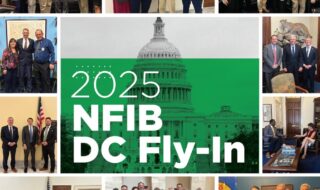Sackett v. EPA: Supreme Court Finally Clarifies WOTUS in Watershed Decision
Sackett v. EPA: Supreme Court Finally Clarifies WOTUS in Watershed Decision
June 1, 2023 Last Edit: June 5, 2025
Sackett v. EPA: Supreme Court Finally Clarifies WOTUS in Watershed Decision
Summary
On May 25, 2023, the United States Supreme Court issued its decision in Sackett v. EPA.
The decision resolved decades of confusion and provides clarity on the Clean Water Act (CWA) and what qualifies as a water of the United States (WOTUS).
The Court flatly and clearly rejected the “significant nexus” test—a test used by different Administrations, the Environmental Protection Agency (EPA), and Army Corps of Engineers to expand their jurisdictional authority and by judges to condone broad claims of authority.
The Sackett decision likely dooms the Biden Administration’s 2022 WOTUS rule.
WOTUS Recap
Congress tasked EPA and the Army Corps with enforcing the CWA. To carry out enforcement, these agencies have jurisdiction over, and only over, those waters that are “waters of the United States.” Because the CWA does not define this phrase, Administrations have differed on its meaning—either defining it broadly to expand agency authority or defining it narrowly to protect property rights. This lack of a definitive meaning has led to 20+ years of confusion for property owners.
Contributing to the confusion was a 2006 Supreme Court decision—Rapanos v. United States—where a majority of the Court failed to agree on the proper test to determine when a wetland qualifies as a water of the United States. Four justices agreed on the “relatively permanent” test, while one member created a “significant nexus” test, and four others would have deferred to executive agencies regardless of any test.
For a more detailed discussion of the CWA, the history of WOTUS, earlier Supreme Court cases involving WOTUS, and the facts of Sackett, review the NFIB blog article Sackett v. EPA – Supreme Court to Finally Clarify WOTUS Once and For All – Maybe?
Sackett Decision
After much anticipation, the Supreme Court released its decision in Sackett v. EPA on May 25, 2023.
All 9 justices of the Supreme Court agreed that the Ninth Circuit was wrong to conclude that the EPA had authority over the Sacketts’ land based on the “significant nexus” test.
None of the 9 advocated for, or even expressed agreement with, the “significant nexus” test from Rapanos used by lower courts and advanced by the EPA.
The Court’s majority concluded that the proper test to define a water of the United States is the Rapanos 4-justice plurality test. This means that waters are “only those relatively permanent, standing or continuously flowing bodies of water ‘forming geographic[al] features’ that are described in ordinary parlance as ‘streams, oceans, rivers, and lakes.’”
For the CWA to apply to wetlands, the wetland must be “‘as a practical matter indistinguishable from waters of the United States.’”
After Sackett, the CWA can reach a wetland and fall under EPA’s regulatory authority if, and only if, it meets both of the following requirements:
- Is adjacent to a “relatively permanent body of water connected to traditional interstate navigable waters”; and
- Has a “continuous surface connection with that [relatively permanent body of water in (1)], making it difficult to determine where the ‘water’ ends and the ‘wetland’ begins.”
Sackett brings long-needed clarity to small businesses, including farmers, ranchers, contractors, and home builders. These entities now have clear guidance about what is a water of the United States. For EPA and the Army Corps to have jurisdiction over a water, it must be one of the following:
- A traditional interstate navigable water; or
- A relatively permanent body of water connected to traditional interstate navigable waters; or
- Wetlands that have a continuous surface connection to:
- Traditional interstate navigable waters; or
- Relatively permanent bodies of water connected to traditional interstate navigable waters.
- NFIB is active in litigation against the 2022 WOTUS rule and is optimistic that courts will strike down the rule.
What Comes Next?
There are 3 main takeaways from Sackett for small businesses and landowners.
First, the significant nexus test is no more. No member of the Supreme Court defended this test, and all agreed the Ninth Circuit was wrong to apply it. There is no legitimate legal basis for judges or agencies to rely on the significant nexus test going forward.
Second, Sackett dooms the Biden Administration’s 2022 WOTUS rule. The WOTUS rule heavily relied on the significant nexus test. EPA and the Army Corps will have to substantially rewrite the rule, or let the courts strike it down and start over with a new rule.
Third, EPA and the Army Corps may still claim greater-than-permitted jurisdiction over waters. For all its excellent and legally correct determinations, the Sackett opinion leaves room for agency abuse. This could be through improper definitions of “relatively permanent”, “connected to”, or “continuous surface connection”, which include more waters and expand agency jurisdiction.
Conclusion
NFIB applauds the Supreme Court for finally bringing clarity to the WOTUS issue, commends the Sacketts and Pacific Legal Foundation for taking the fight to the EPA, and joins all small businesses and property owners in celebrating this monumental victory. You can read the amicus brief NFIB filed in Sackett here.
The NFIB Small Business Legal Center will continue to track the WOTUS issue and fight back against improper claims of agency jurisdiction.
For additional questions on Sackett, WOTUS, or property issues, contact us at info@nfib.org.
June 1, 2023
NFIB is a member-driven organization advocating on behalf of small and independent businesses nationwide.
Related Articles













